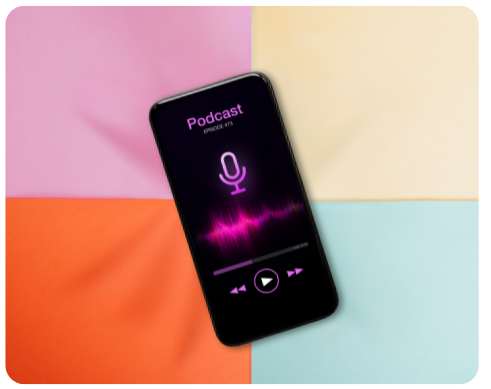Pixel Tracking: A Game Changer for Podcast Advertising
Attribution is Everything
When it comes to podcast and YouTube advertising, attribution is everything—yet it’s also one of the trickiest parts of campaign measurement. Promo codes and post-purchase surveys are helpful, but they don’t tell the full story of how a listener becomes a customer.
That’s where pixel tracking comes in.
A pixel is a lightweight piece of code added to your brand’s website, typically set up by your dev or marketing team using platforms like Podscribe. Once installed, it helps track what users do after hearing your ad—whether they click a link, search your brand, or arrive later through another channel.
The Data is Clear
According to Podscribe’s Q2 2025 Benchmark Report, pixel attribution uncovers nearly 7x more conversions than surveys and over 4x more than promo codes. With average survey response rates hovering around 33%, brands relying only on traditional methods may be missing up to 80% of podcast-driven engagement.
How Does This Translate Into Podcast Advertising Impact?

ADOPTER Media's, VP of Sales, Elsie Kaplan, offers a clear look at how this plays out in the real world:
"Pixel tracking shows you everything you don't know your customer might be doing—unless you happen to be sitting right next to them when they make a purchase, that is! Customers aren't trained for attribution, so even when we give them a link they can click, a discount code they can use, and a special offer to take advantage of, they're often going to do what's easiest for them.
With pixel data, we can clearly see what most customers do after hearing a podcast ad. They go to Google (or Bing—whoever is still using that...) and type in your brand name. They click on the first link that appears (which is often your paid search link), they find the item they want, and they go to check out.
If your site has a ‘put in your email for a special gift’ pop-up, the customer will probably do that rather than use the code they only half-remember from your podcast ad. And furthermore, if you don't make a big 'COUPON' button in the checkout, they're probably not plugging that in either.
Pixel shows us—from the moment they hear your podcast ad—just how long it can take for them to feel motivated to take action. It also shows us what other ads they may have seen (whether they clicked on a Meta ad or an email promo before arriving at your site). This gives you a fuller picture of how you reached your customer—and more importantly, how we can help them check out quicker and convert more visitors into buyers." Elsie Kaplan
Pixel Tracking Helps Validate Your Podcast or YouTube Ad

What This Means for Advertisers
If you’re investing in host-read podcast or YouTube ads, pixel tracking helps validate what’s working—beyond vanity URLs and code redemptions. It allows agencies and brands to:
- Identify top-performing traffic sources
- Attribute delayed or indirect conversions accurately
- Understand multi-touch journeys across devices and channels
It also gives you the kind of granular insight that can help reduce cart drop-off, improve landing pages, and optimize creative messaging across the funnel.
As Elsie pointed out, most customers don’t follow perfect attribution paths—but pixels give us the next best thing: actual behavioral data.
Podcast Ads ≠ One-Click Sales
Most listeners don’t take a direct path from ad to checkout. That’s why pixel tracking is a must. It shows:
- What listeners actually do after hearing your ad
- How long it takes them to take action
- Where they really came from (hint: not always your promo link)
- What causes drop-off at checkout
Bottom line: Promo codes and surveys leave gaps. Pixel data closes them.
Want more tips for podcast and YouTube ad success? Check out our Podcast Advertising Guide.
ADOPTER Media
We believe in data-driven results and are dedicated to helping everyone make better decisions and advance their work using a platform trusted by Fortune 500 companies and beloved regional brands alike. Have a question about podcast advertising or YouTube sponsorship? Connect with us and we will be happy to help!

